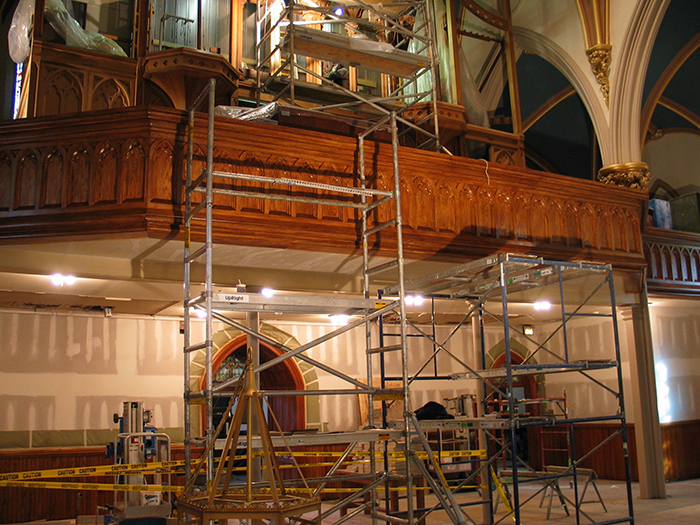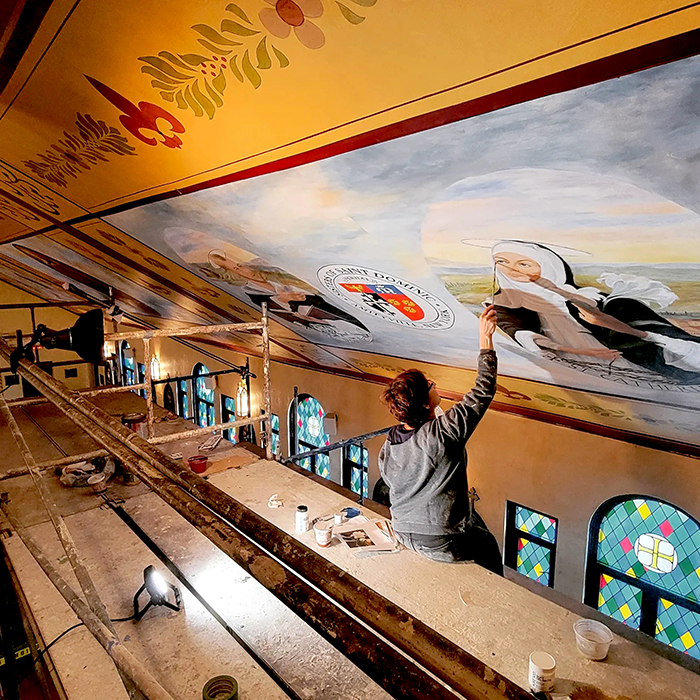
‘It takes years to really learn how to refine faux finishing’
PROSPECT HEIGHTS — Faux. In French, the word means “false,” but listings in an English-language thesaurus yield such negative-sounding synonyms as fake, bogus, sham, phony, or counterfeit.
But “faux finishing” — the use of paint to reproduce the appearance of materials like stone, woodgrain, or even fine marble — is considered an art form, dating back 5,000 years. It has been perfected from the days of early Mesopotamia, ancient Rome, the Renaissance, Colonial America, up to modern times.
Artists Ginger Andro and Chuck Glicksman use the techniques to restore or create decorative interiors in homes — and in “sacred spaces,” like Catholic churches. They insist, however, that there’s more to what they do than merely applying a fresh coat of paint. Their company, True Faux Studio, aims to create art. That’s what they did at Sacred Heart Parish in Glendale, Queens, said its pastor, Father Fred Marano.
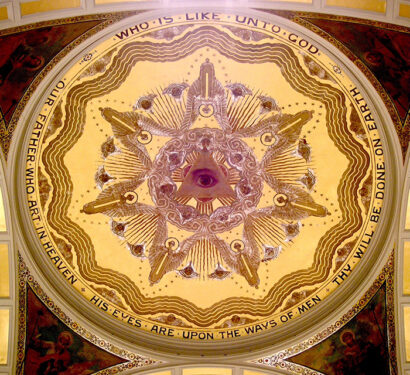
He praised the couple for giving the church’s interior a wood-grained touchup and restoring its stations of the cross. He calls the six new murals they also installed on the church ceiling “the Sistine Chapel of Queens.”
According to Andro, “it takes years to really learn how to refine faux finishing. You can go online and in 20 minutes, you can learn how to do it, and that’s fine if that’s what you want. But you can do better than that. So, no, it doesn’t have to be a cheap thing.”
“But it can be [cheap],” Glicksman added, “and it can be tacky. And a lot of faux finishes that we see are. But they can also be beautiful.
“We take solace in the fact that faux finishing is a centuries-old tradition.”
True Faux Studio, based in Westwood, New Jersey, was well-established five years ago when Father Marano first envisioned renovations for Sacred Heart. He noticed that the company had “been doing just this unbelievable stuff at other churches.”
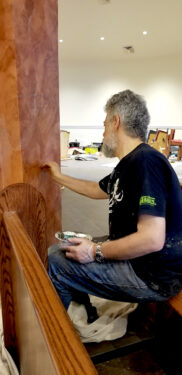
Among them: five Catholic church projects in Manhattan, and one each in the Bronx, Yonkers, on Long Island, and in Connecticut.
An example is the faux woodgrains painted inside St. Patrick’s Old Cathedral in Manhattan. At St. Augustine in Bridgeport, Connecticut, True Faux Studio painted an entire pine choir loft to resemble fine oak, just like the pews on the ground level.
The team replicated various types of decorative marble in Manhattan at Our Lady of Sorrows, Our Lady of Mount Carmel, and at St. Jerome Church in the Bronx. Also at St. Jerome, Andro repainted the “God’s Eye” mural in the ceiling. But, at the request of church leaders, she changed the eye’s color from blue to brown to reflect an influx of Hispanic parishioners.
Pastors consider the art to be a cost-effective option to refurbish or decorate their church interiors with fixtures that have the appearance of materials they normally could not afford. Paint, they noted, costs much less than elaborate stone blocks imported from Europe.
An example is the Carrara marble from Italy that Glicksman replicated at St. Thomas the Apostle Parish in Bloomfield, New Jersey.
“That’s why some people like the faux stuff because it looks exactly like it,” Father Marano said.
He also praised “the enormous amount of hard work, dedication, and love involved” in the work they did at Sacred Heart. “This church is a labor of love for them. That is what they said, and that is what we feel.”
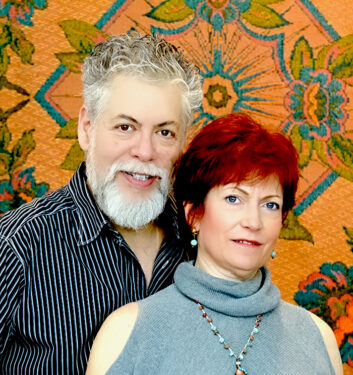
Glicksman grew up on Long Island, and Andro is a native of New Jersey. They both grew up wanting to paint and sculpt, but didn’t set out to be “finishers.”
The couple discovered faux finishing while exploring ways to redecorate an old house they bought in New Jersey. They studied and took lessons, and “got a pretty good education with all of these finishes,” Glicksman said.
“It was just for ourselves at first. Then sometime in the late 1990s a contractor said, ‘You could even think about doing it as a business.’ We thought, maybe that was a good idea.”
There were medical setbacks; Andro survived a breast cancer diagnosis, then, she said, Glicksman “came down with endocarditis and ended up having an emergency heart valve replacement.”
As the couple recovered, they went back to work, and found it therapeutic.
“You know,” Andro said, “when you’re going through this kind of medical stuff, to be working in these spaces was really extraordinary. It was just one job after another in the churches, which was pretty wonderful.”
Andro is Catholic and Glicksman is Jewish. Glicksman said he felt a spiritual connection, especially when their work at Sacred Heart was dedicated during a Jan. 23 Mass.
“Just to see it with the church filled with the congregation — it was really stunning,” he said. “To feel the elevation, the spiritual elevation, was very uplifting.”
